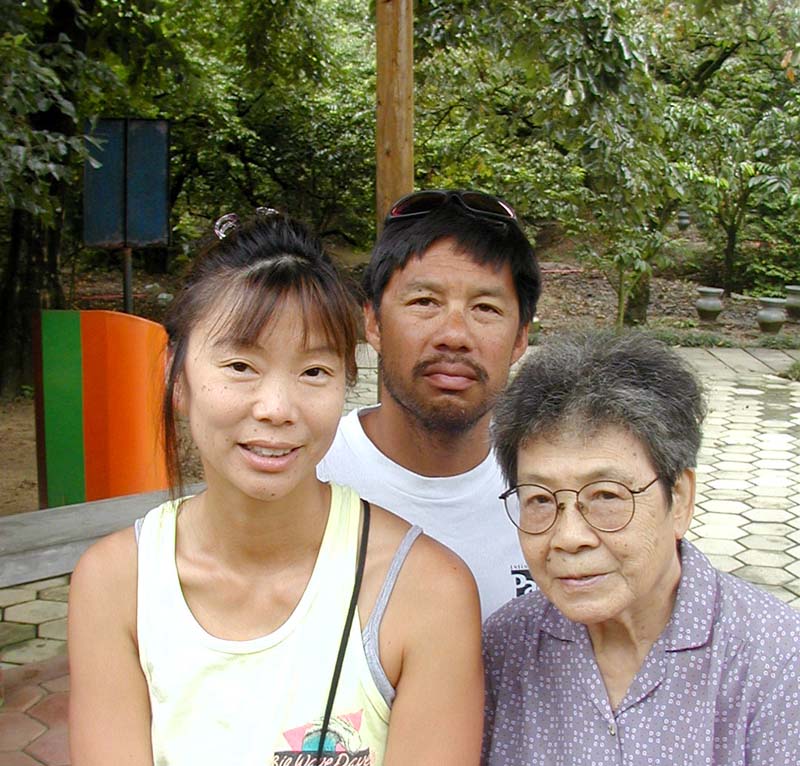The Chronicles of Chow King Leong & His Family
The Chronicles of Chow King Leong & His Family - Addendum
Page 2
The Pearl River Delta in the 19th Century
The Pearl River Delta region, where Luzhou is located, like much of China at this time, suffered from very
poor quality of life. After our ancestors migrated from Northern China, sometime during the European Middle
Ages, it became a prosperous region with productive farms, navigable waterways, and an international trading
center. Its inhabitants did not stop wandering after migrating from northern China, and were instrumental in
dispersing to, and establishing communities in the Middle East and South East Asia. The prosperity did not last,
however, as several forces were in
play, leading to the deteriorating conditions of the 19th century, which prompted Chow King to seek a
better life elsewhere. There was increasing foreign exploitation, two opium wars with the British, the Qing
dynasty was losing power, and there was extensive flooding. This paved the way for warlords, infighting, and
poverty. It is not surprising that the California Gold Rush would be inviting to these people and these
conditions. Even thirty years into the 20th century, things had not changed much, and triad gangs were preying
on the inhabitants. Chinese from America with their perceived wealth were prime targets. Once the family
returned to the US, Lee and Andrew were able to visit the village, but by this time they were passing as
locals, and not potential ransom treasures.
Luzhou
On modern maps, our village, Low Chow, becomes Luzhou, Shun Tak, the county, (and also our dialect), is Shunde
and Kwang Tung, the province, is Guangdong, all modern Pinyin Mandarin pronunciations. This is the sign that
used to be on our village gate:

Reading from right to left, the gateway sign reads: "Lù Zhou Cun Zé Pu Dà Dào"; this very roughly translates
as the "boulevard (Dà Dào) by the large canal (Zé Pu) to the village (Cun) in the land filled (Zhou) with
egrets (Lù)"; the gate and sign are no longer there, torn down as part of a modernization campaign (photo Ron Dong)
|
Luzhou is right off a major highway 363, near the town of Lecong. This is a furniture making region full of
modern buildings. You can even map our village on Google Maps, using the coordinates
22.942388, 113.108293.
You'll see the Luzhou Villagers building, health center, and a park. One of the major industries in Chow King's
days was the cultivation of mulberry bushes to feed silkworms. We can guess that, perhaps, Chow King was
destined to be a mulberry farmer, had he not come to Gold Mountain.

Auntie Sum (Choy Sum Chow)in 2002
Click to view larger |
These days, the area around our village
is famous for furniture making, and Guangdong is home to Shenzhen, where iPhones are made.
Relatives still in China
Auntie Ann mentions Chow King's youngest sister,
Wong Hing. Bot Goo Paw, Great Auntie #8, died in 1991. Auntie
Sum is the youngest sister in the Lai faction of the original three brothers. She is most often our liaison
for visitors to China. No male sons of Chow King's generation stayed in China or lived to father children,
so all male heirs of the Chow lineage are in the US.
Ships and voyages
Chow King first arrived in the US, entering San Francisco aboard the Pacific Mail Steamship "S.S. City of Rio
De Janeiro" on Nov. 17, 1897. That ship became the worst shipping disaster of the Bay Area when it struck
rocks while attempting to enter the bay in heavy fog, only three years after Chow King's sailing. 130 people
perished that dawn, including the captain, and less than 80 survived. She lies today, in 320 feet of water
somewhere off Fort Point and is National Register #88002394.
Auntie Ann mentions multiple trips, but in fact, immigration only has record of one visit, when he brought
Lau Shee back with him. Chow King's first departure to fetch his wife was aboard the SS Manchuria, in June
of 1909 and the return trip, in December 1909, was aboard the Toyo Kisen Kaisha (TKK) Tenyo Maru. This ship
was 575 feet long and quite luxurious in the upper classes, but not for the 800 passengers in Asian Steerage,
which undoubtedly included our family.
The 1930-1932 trips involved 3 ships since Lee and Andrew came home separately. Those were the Asama Maru, the
Taiyo Maru, and the SS President Coolidge, and a cabin was secured, so our family no longer traveled in
steerage.
Page First 4 5 6
7 8 9 10
11 12 Last Next

